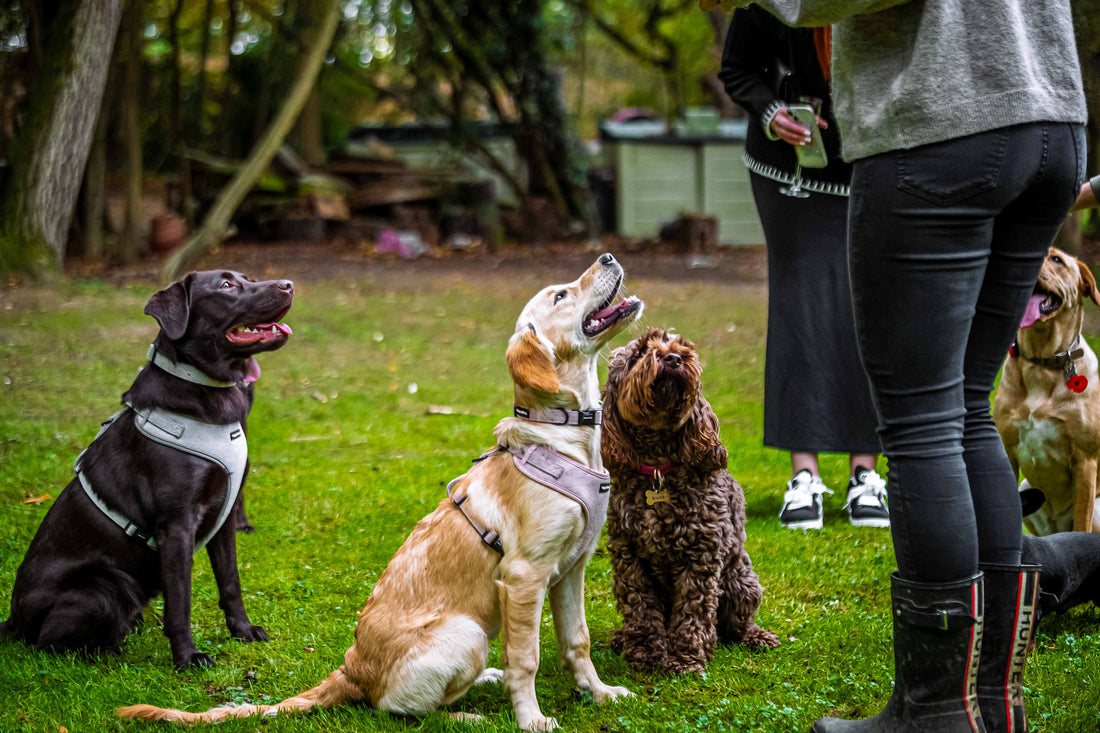
How to Train Your Dog to Walk Nicely on a Lead
Loose-lead walking isn’t just about making strolls more pleasant — it’s also about safety, control, and keeping both you and your dog calm on walks.
If your pup tends to pull, dart, or zigzag, don’t worry — you’re not alone. Lead training is something nearly every dog and owner work on at some point.
Here’s a step-by-step guide to help you train your dog to walk nicely on a lead, with tips that suit pups of all personalities.
1. Start With the Right Equipment
Before any training begins, make sure your gear isn’t working against you.
- Harness over collar: If your dog pulls, a harness can reduce strain on the neck. Our Tweed Harness Collection offers a secure and stylish fit, ideal for training.
- Lead length: A standard lead (not retractable) around 1.2–1.5 metres gives enough freedom without losing control. Check out our Tweed Dog Leads — lightweight, strong, and easy to handle.
2. Pick a Quiet Spot First
Distractions can ruin the best efforts. Begin lead training somewhere quiet — your garden or a calm street. Let your dog get used to the gear. No pulling, just relaxed walking and praise.
Once your dog is used to the lead and responds well, gradually introduce more stimulating areas like parks or busier pavements.
3. Use the “Stop and Wait” Method
Pulling ahead? Stop walking.
Every time your dog pulls, stop immediately. Wait for them to look at you or come back to your side. Once the lead slackens, start walking again. It’s repetitive, but it works.
Over time, your dog learns that pulling gets them nowhere — but walking calmly keeps the adventure going.
4. Reward Calm Behaviour
Keep treats handy. Every time your dog walks beside you with a slack lead, reward them. A small treat or a cheerful “Good boy/girl!” goes a long way.
This positive reinforcement builds the habit. They’ll soon realise that staying close is worth it.
Pro tip: Use a Dog Walking Bag to keep treats, bags, and essentials organised — it’ll save your pockets from smelling like chicken.
5. Keep Training Sessions Short
Don’t push it. Ten to fifteen minutes is plenty, especially for puppies or excitable dogs. End on a good note, with praise and a cuddle. Overdoing it can lead to frustration on both sides.
6. Be Consistent (Even on Lazy Days)
Every walk is an opportunity to reinforce good behaviour. If you only do it “sometimes,” your dog won’t learn the rules. Be patient, be consistent, and remember: progress may be slow, but it’s steady.
7. Consider Switching It Up
Some dogs respond better to changing direction instead of just stopping. If your pup pulls, turn around and walk the other way. Do this calmly. It encourages them to check in with you instead of charging ahead.
Final Tip: Walk With Confidence
Dogs pick up on our mood. If you’re tense, they’ll feel it. Relax your shoulders, keep the lead loose, and enjoy the walk. Confidence on your end can help create calm on theirs.
